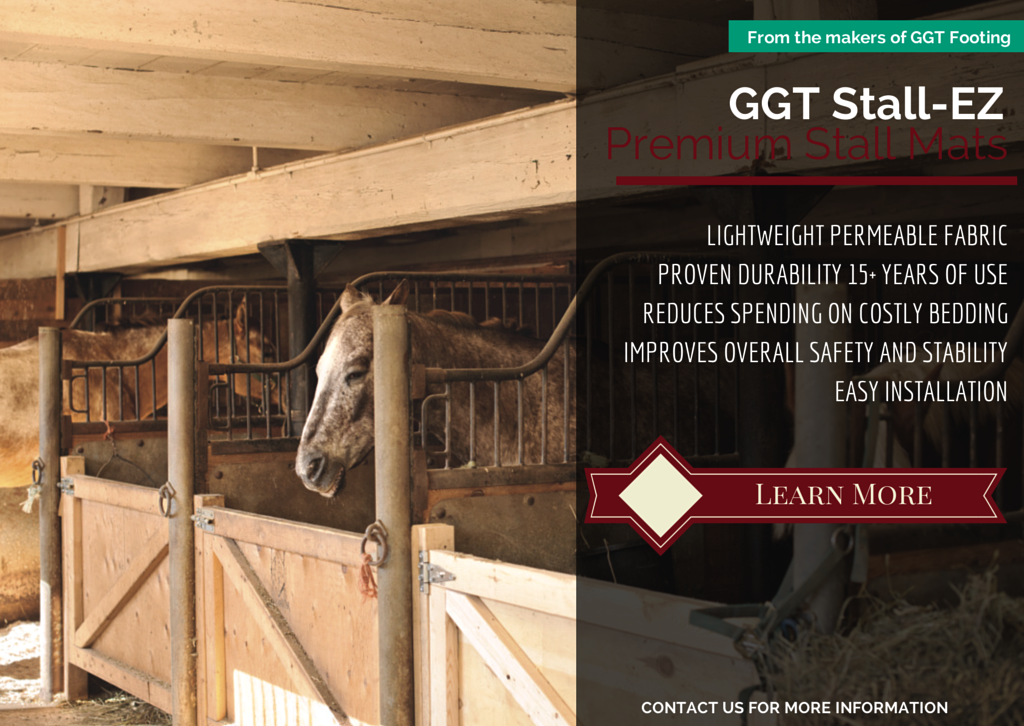Looking to build a new arena? Thoughtfulness in the design is the only way to assure you end up with an arena that is enjoyable to use, safe for the horses, and holds up over time. These steps are just as important for a private arena as for a public facility. Here are the best practices in equestrian arena design.
Consider the Purposes of Your Arena
What type of riding is to be done in your arena? The design needs to represent the activities. For example, training horses is best done in a round arena, while dressage requires at least 66 feet by 197 feet of space. If jumping or driving competitions are to be held there, you'll need an even larger facility. For showing horses, you will need to plan a separate area for warming up the horses, and the arena must meet the requirements imposed by the sanctioning body. When calculating the space for your arena, add several yards into the design to accommodate fencing, drainage ditches, seating, or other construction in addition to the arena surface.
The footing also needs to suit the type of riding to be done. Dressage requires a firm, supportive footing, while jumping calls for a footing with good traction and excellent cushioning. The wrong footing can lead to severe joint and soft tissue damage, and can also reduce the horses' ability to perform well during events or practice.

Arenas designed with premium footing will save you money in the long term!
Assure the Drainage is Sufficient
Anyone who designs or builds equestrian arenas understands the importance of good drainage. While creating a fall (or slope) on the surface helps drain the area to an extent, it's crucial to select a location that doesn't have issues with standing water. You'll also need to analyze the soil beneath the arena to assure that it will afford proper drainage.
You'll also want to have a source of water nearby so you can wet the arena surface during dry spells. If you build drainage ditches to accommodate runoff, be sure the fall of the arena surface leads the water toward the ditches.
Arena Footing
A well-constructed arena surface is generally made of four layers: the sub-base, a layer of geotextiles, the base, and the footing. The sub-base is most often the native soil. To assess this soil prior to constructing your arena, dig about four feet below the surface, because often well-drained sandy soil is masking waterlogged clay underneath. On top of the sub-base, a layer of geotextiles helps keep the base from mixing into the sub-base, which can erode your arena surface and cause it to develop an uneven surface, which is dangerous for horses and riders. The base is generally crushed stone, which is compacted so that it does not shift or slip. The footing is applied over the base.
Though sand has been the traditional footing for many arenas, sand alone gives too much to provide adequate support for running and jumping horses. Modern arenas use a blend of sand and textile fibers, which stabilizes the sand and provides additional benefits, including less dust, good maintenance of the moisture level, better stability, less packing, and a longer lifespan for the arena surface.
Maintain the Arena After Construction
Perhaps the most overlooked aspect of arena construction is maintaining the facility over time. It's odd, but people who spend tens of thousands of dollars on a quality arena often neglect basic maintenance that can keep their surface viable for a decade. Remove weeds as soon as the pop up, and harrow the footing regularly. Even the best drained arenas will hold water for a bit after a soaking rain, so keep horses and people off the footing until standing water has drained and dried.
Do you need a well-constructed arena private or public use? Contact us. We can help you build an arena that is safe and comfortable for the horses, enjoyable for the riders, and attractive for spectators. Get a free consultation to see how East-West Arena Construction can help you get the equestrian arena of your dreams started today!



